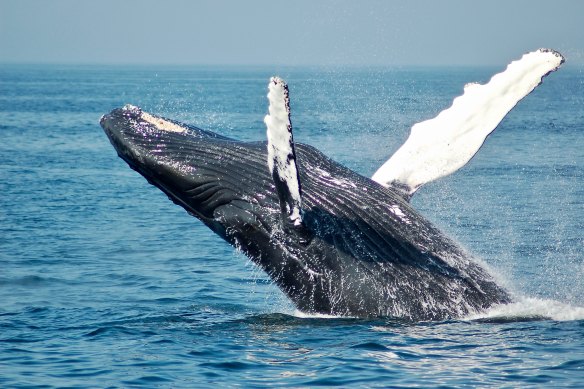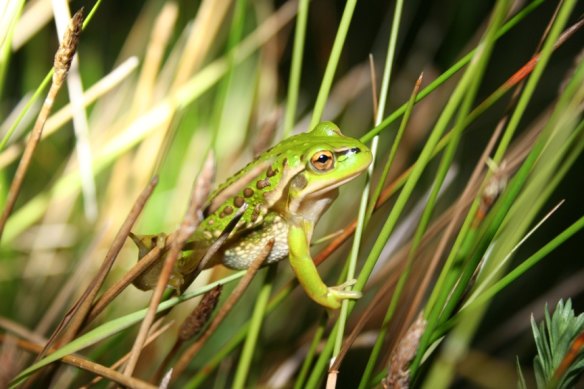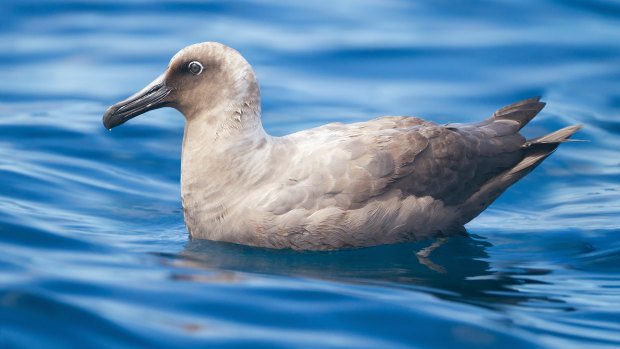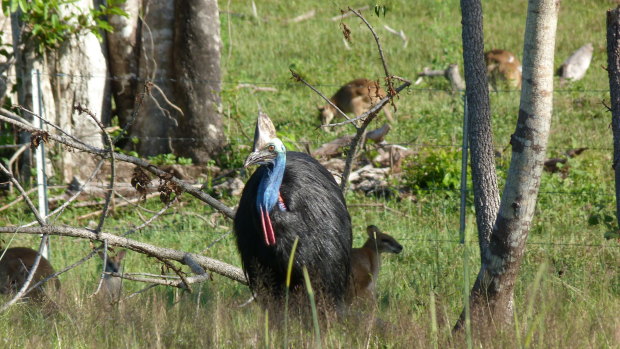
The Australian animals back from the brink of extinction
Australia’s threatened animals live under constant pressure on all sides, vulnerable to feral species such as cats and foxes, the human destruction of their habitat, soaring levels of plastic pollution, and a rapidly warming climate.
But sometimes they also make a recovery. Twenty-nine Australian animal species – 15 mammals, four frogs, eight birds, one reptile and one fish – have pulled back from the brink of extinction to the extent they no longer meet the criteria for being listed as threatened, according to research published in the journal of Biological Conservation.

The humpback whale is one of 29 Australian threatened animal species to have made a recovery.Credit:Todd Cravens/Wikimedia commons
They include well-loved animals such as humpback whales, Murray cod and cassowary, and lesser-known species including the burrowing bettong and Flinders Ranges worm-lizard.
While these animals represent less than 10 per cent of Australia’s threatened wildlife, the group of highly regarded scientists behind the research says each species recovery should be celebrated, and provide lessons on the factors underpinning their success.
“It’s so easy to be depressed by the collapse of nature around us and think there’s nothing we can do, when in fact there are strategies that work – we can contribute to recovery,” says lead author Professor John Woinarski, of Charles Darwin University, who is also a member of the newly formed Biodiversity Council.
Woinarski and four other conservation scientists reviewed all listings of Australian threatened animal species and used available evidence about their conservation status to assess whether they still met threatened species eligibility criteria.
They focused solely on threatened animals because the status of most of Australia’s listed threatened plant species has not been subject to recent review.
Under Australia’s environment laws, the conservation status of threatened species is not required to be subject to formal periodic review. This contrasts with the United States, where the government must review the status and trend of every threatened species every five years.
The researchers found there were a few different pathways to recovery, and most were the result of long-term strategic management.
There has been a major increase in humpback whale numbers since commercial harvesting was banned. The Murray cod has benefited from decades of fishing regulation, captive breeding and translocation, while the southern cassowary’s recovery is due to extensive reservation of land and legislation that successfully halted habitat loss.

The growling grass frog is another of the 29 threatened species that have made a good recovery. Credit:David Bryant
All other cases of recovery were due to the effective control of invasive animal species, particularly foxes and cats. On Macquarie Island, the eradication of introduced cats, rabbits and rodents between 2006 and 2014 led to a reversal of previously declining populations of many breeding seabirds, including the blue petrel and black-browed albatross.
Mammals had the best rate of recovery because the pests causing their decline, largely cats and foxes, could be controlled at a local level, and they could be relocated to island or fenced areas.
“There are many cases of local animals going down the gurgler until they are reintroduced into fenced areas,” Woinarski said.

A sooty albatross. Credit:John Harrison/Wikimedia Commons
Threatened species affected by wide-scale land clearing, forestry, climate change and changed fire regimes had not recovered, the researchers found. “Australia is not managing those threats adequately yet, and they represent formidable challenges,” the paper notes.
Much of the world’s biodiversity is in decline. Globally, cases of recovery have been recognised, but in most cases, threatened species are not recovering, and Australia is typical of this global trend.

A southern cassowary Credit:Donald Hobern/Wikimedia Commons
A far larger number of listed animal species have had their listing upgraded (64 species) than downgraded (10) since the establishment of Australia’s national environmental legislation, the Environment Protection and Biodiversity Conservation Act 1999 (EPBC Act), in 2000.
“This tendency for a lack of recovery or ongoing decline for listed threatened species represents a significant conservation failure,” the authors write.
Loading
At least five animal species listed as threatened under the act have become extinct after they were listed, including the Christmas Island pipistrelle, a small insectivorous bat, and the small Bramble Cay melomys, a native rat.
Get to the heart of what’s happening with climate change and the environment. Our fortnightly Environment newsletter brings you the news, the issues and the solutions. Sign up here.




































































